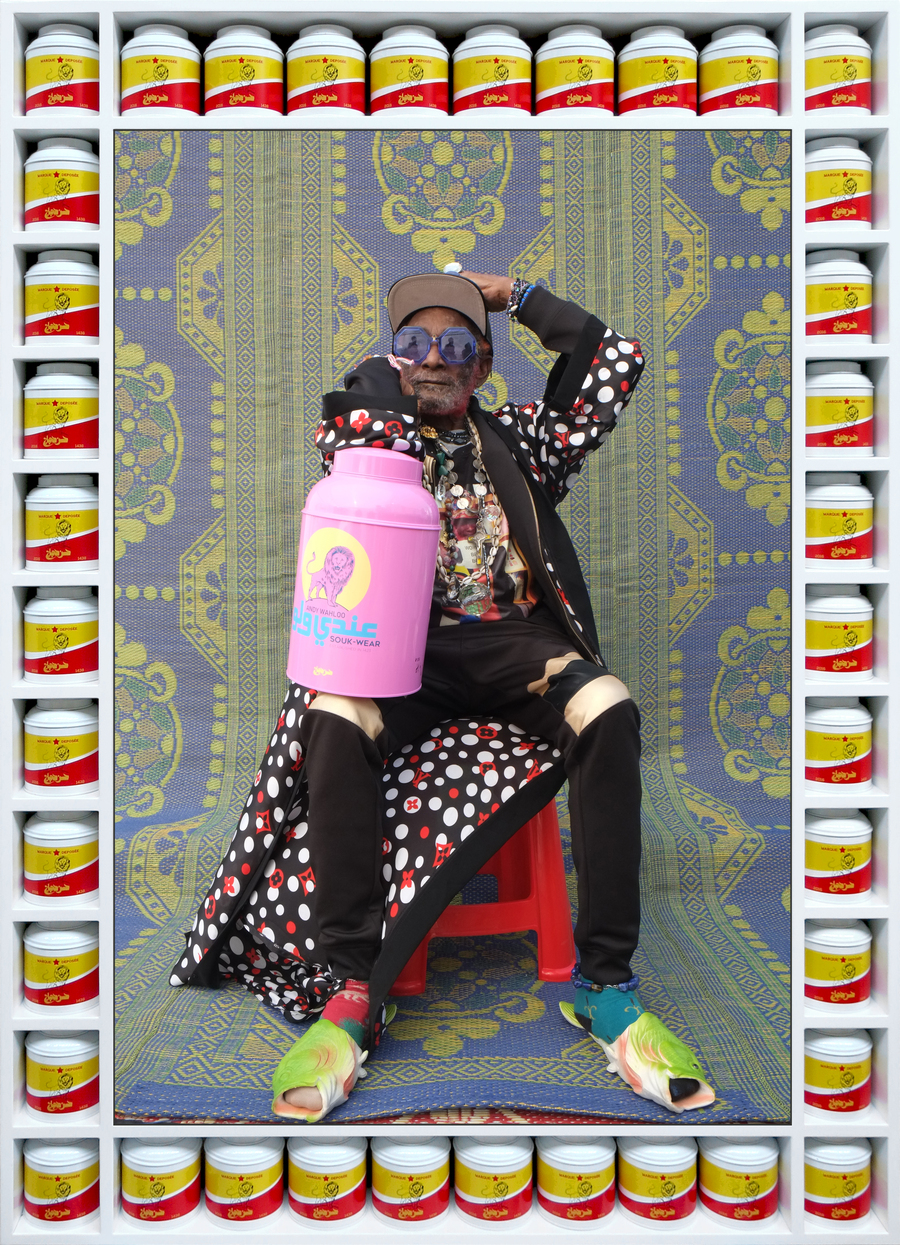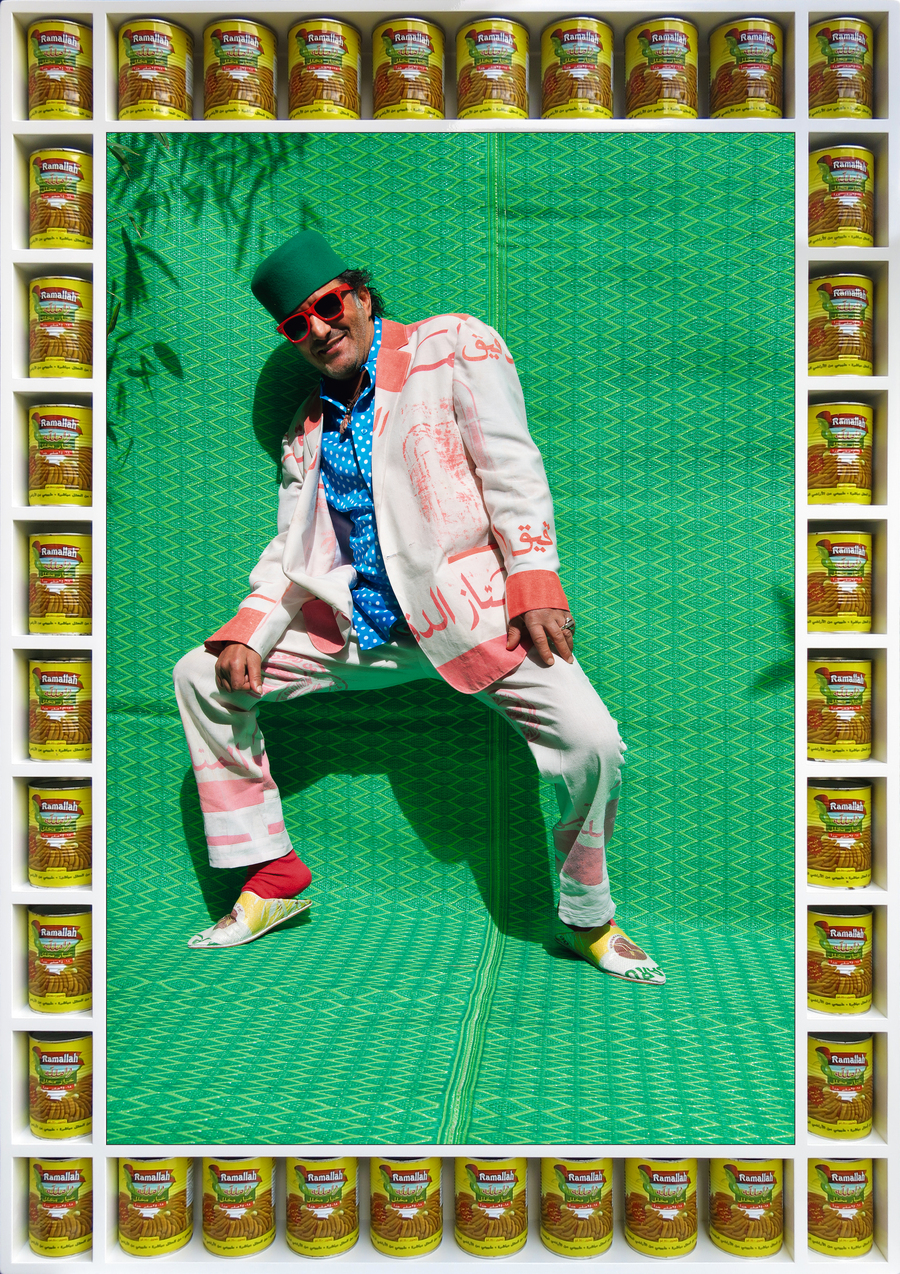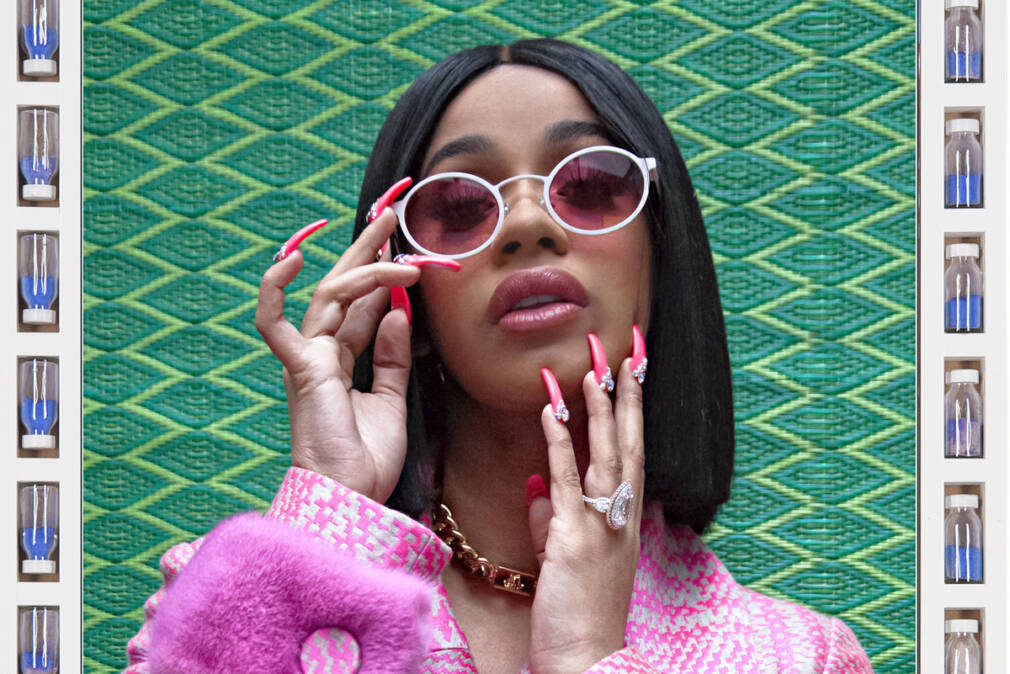“It becomes like a dance” explains Hassan Hajjaj when we speak to him from Marrakech about his joyful portraits of everyone from Lee Scratch Perry to Cardi B. The Moroccan Londoner’s practice traverses photography, fashion and film, and with his art in the collections of the Brooklyn Museum, Guggenheim Abu Dhabi, Museum of African Contemporary Art Al Maaden in Marrakech & the Victoria & Albert Museum in London, he was hard at work on the next volume of his My Rockstars series when he jumped on a call to speak about his process through the prism of music and musicians.
Born in 1961 in the fishing town of Larache in the Tanger-Tetouan-Al Hoceima region of northwestern Morocco, Hassan recalls growing up with a multitude of music, the most popular being: “What we call Chaabi, the local music” going on to enthuse, “But then you had Gnawa music, we had Umm Kulthum and all the music from Egypt, all his very local specific music from Morocco like Rhaitamusic – which is like a flute but not a flute! As well as Berber music and finally Indian music – As the only movies we wanted to see back then were Indian films so in the market we’d get cassettes of Indian music.”
Complimenting these sounds: “We could get the radio from Spain” remembers Hassan “as it was only 13 km away so you had this Spanish and Latin music and as it was the mid 60s 70s and there was a lot of rock music like Pink Floyd and Jimi Hendrix.”
His first encounter with portrait photography came as a sitter when his mother took Hassan and his siblings to have a photo taken to send to their father who had gone ahead to London to look for work. Hassan recalls vividly the props of the photographer including a cowboy costume and plastic horse. It wasn’t until 1973 that the family joined his father in London.

Courtesy of Lee Scratch Perry and the Artist
London was a different place in the seventies, Hassan reminds me, “When I arrived in England I was Moroccan and I didn’t speak English. It was a foreign land, and it was a few years before I adjusted.” On leaving school he got involved in organizing parties and as: “growing up most of my friends were from the Caribbean I got into soul music and then reggae as it was an up and coming music and I became a big reggae head “. Hassan’s role was to scout and dress venues for these parties which he did for about fifteen years in parallel with clubs, deejaying, and opening a clothing shop named R.A.P (Real Artistic People) in London’s Covent Garden. During this time he took photos of his friends but an epiphany came on a trip back to Morocco when he observed Elle Magazine using a friend’s Riad as an exotic backdrop. It was then he realized he wanted to use photography to showcase and celebrate his culture and the pan-Africanism of multicultural London.
Hassan started documenting musician friends living in or passing through London against backdrops he made using everyday objects ubiquitous across Africa such as cheap plastic mats and colorful CocaCola crates for his subjects to sit and pose on. Designing suits cut from African wax print, or upcycled from found materials, Hassan began reclaiming the idea of a `rock star’ and elevating the clash of color and counterfeit goods found in the medinas of Marrakech or London’s Camden Market, to high fashion. Completing these portraits are frames (so often an afterthought for artists and galleries) composed of tins of olives, sardines, or harissa in vibrant colors and Arabic script.
Shooting his subjects on the street in front of his shop in Shoreditch East London, Hassan explains how music accompanies the process. Music, which: “If it’s not live, I will have on my Bose speaker” continuing “I always try to have live music for the shoots because it becomes like a performance. The sitter is performing, I’m performing and I’m shooting to the beat. When I was shooting on film I’d always shoot with a click so I’d get into a rhythm with a person, with the musician, or the music, and it becomes like a dance. So that’s become part of it without realizing. It wasn’t anything that I planned, it just happened regularly and now it’s almost expected!”
These days Hassan still shoots on the street in Shoreditch but he is just as likely to be shooting for The New Yorker as he did for Cardi B back in 2017. “I got this call from New Yorker Magazine to shoot this girl called Cardi B for the cover and at that time I didn’t know she was. So I Googled her and then I realized I’ve seen her on TV.” Or at the annual fashion and music festival Sole DXB in Dubai where he shot Lee Scratch Perry.

Courtesy of Rachid Taha and the Artist
A dream come true for Hajjaj who has been a fan of Perry’s since his Black Arc days, the shoot unfolded over two days, Hassan recounts: “The great thing is he came for the first day and I shot him mainly in his own clothes. He stayed behind a bit and saw I was shooting other people and he was a bit quiet, just watching and observing. Then the next day I got a call from his team saying: `Listen, he loved it! Can he come back and do a shoot with your clothes?’ And I said, ‘Definitely!’ So he came back and we spent the whole day!”
Another hero of Hassan’s is Rachid Taha who was already a friend when he proposed to photograph the late Algerian star in Paris on location with friend and restaurateur Mourad Mazouz, better know as “Mommo”. “There’s Rachid Taha on the stage – the rockstar, and then there’s Rachid Taha the sensitive person, and I really honed in on that” explains Hassan,remembering: “I really got on with him, we didn’t have to speak. He was doing something from our culture, I was doing photography, and Momo was doing food so it was this nice triangle of three North Africans doing their own thing. I wasn’t sure if he was going to turn up, if he was going to come late? But when I arrived there he was already there an hour before. We had a really nice day. I shot him, we had lunch, we carried on shooting, and we stayed there until 1 in the morning!”
One of the almost seven hundred `Rock Stars’ Hassan has shot, the pictures of Taha, Perry and others form a body of work with each “like a musical note so that if you put loads of them together it becomes like a song”. “Music for me is the rhythm that gives my art a spirit, and the rhythm in my pictures” Hassan sums up before signing off a chat as warm and big hearted as his portraits.




